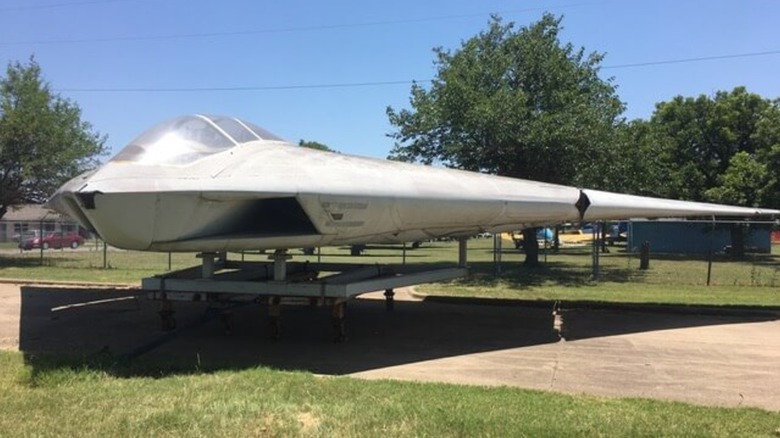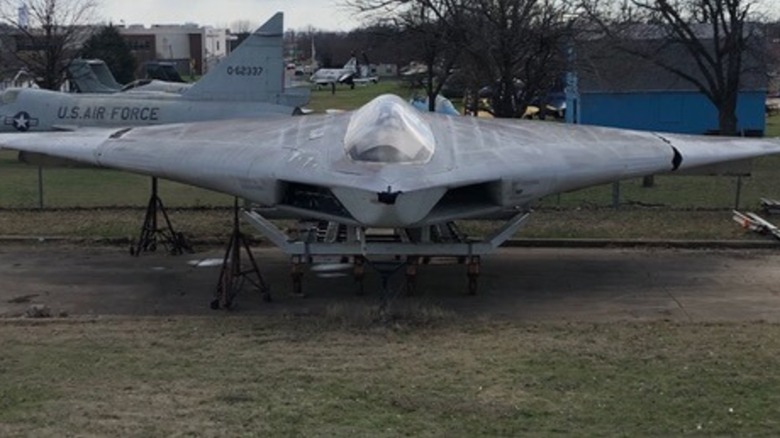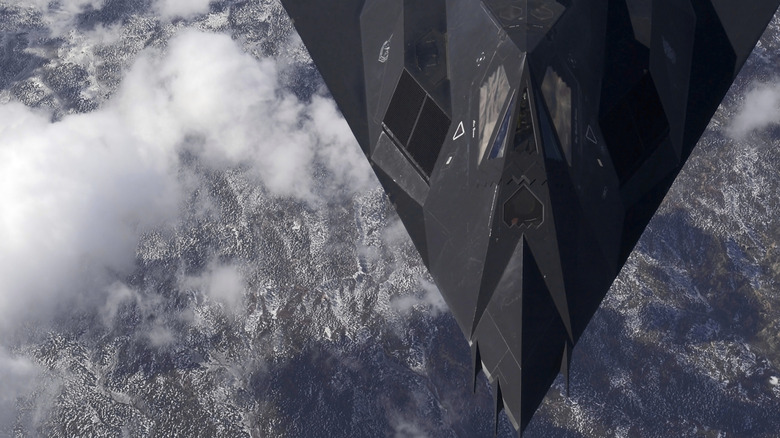Why Is The Canceled A-12 Military Aircraft Called The 'Flying Dorito?'
The United States of America's Defense Department awarded McDonnell Douglas and General Electric a $4.8-billion contract to develop a potential replacement for the U.S. Navy's A-6 Intruder in 1984. Unlike the A-6, the Navy wanted something with stealth capabilities. McDonnell Douglas designated the new stealth plane the A-12 and the Navy named it the Avenger II after the Grumman torpedo bomber used during World War II. Similar to why the F-35 is called the Lightning II. The new Avenger wouldn't look anything like its propeller-driven predecessor, instead its designers designers came up with a flying wing design that gave it a similar appearance to a Frito-Lay Dorito. Thus, it was nicknamed the "Flying Dorito."
Why didn't anybody call the B-2 the "Flying Dorito?" The rear of the B-2 has a jagged design whereas the A-12's is a straight edge. The nickname was significantly more fitting for the A-12's compact design. Not that it was literally as small as a real Dorito, but its projected smaller stature wouldn't have helped matters. It needed to fit on an aircraft carrier, which meant folding wings. The aircraft's length would have been shorter than the A-6 but its width would have been close to the same.
The Navy intended to purchase 620 airframes while the Marine Corps wanted 238, making a total of 858 A-12's the original plan. Unfortunately, the Marines eventually backed out, reducing the total order to 620, but the Avenger II program was promising. Until it wasn't, making the A-12 just another fighter jet that never took to the sky.
Why didn't the A-12 pass muster?
The biggest challenge for the Avenger II program was keeping it within budget. The contract was for $4.8 billion, which included eight prototypes, but $1.2 billion was added shortly after and an additional $200 million after that. This inflation was attributed to the technology. McDonnell Douglas and General Electric needed advanced composite materials to construct an aircraft with a small radar cross-section, which it lacked experience with. One after another concern arose, leading to delays and cost increases. The two manufacturers found the aircraft's maintainability as well as its weight an issue, too.
Tension between the two contracted firms slowed development significantly. Neither wanted to share data or technology with one another because they were competitors on an Air Force project that pitted Lockheed, General Dynamics, and Boeing against Northrop and McDonnell Douglas. The secrecy didn't stop there. The contractors kept Pentagon officials in the dark with project details. Specifically the Secretary of Defense, Dick Cheney. At one point he said, "But no one could tell me how much the program was going to cost, even just through the full scale development phase, or when it would be available," according to the Fort Worth Aviation Museum.
When all the detail came to light, Cheney learned the program was over $1 billion over budget as well as 8,000-pounds overweight, he pulled the plug in January 1991. The Navy may not have gotten its own stealth attack jet at the time, but now it has the F-35C, one of the most advanced fighter jet's in the world.
How the Flying Dorito compared to other aircraft
Had McDonnell Douglas and General Electric ever produced an operational Avenger II, it would have been more than 37-feet long with a wingspan of roughly 70 feet. That's shorter than the Intruder's 55-foot length and bigger than the Intruder's 53-foot wingspan. Compared to the Intruder, the Avenger II couldn't carry as much of a payload. It carried up to 5,150-pounds internally, but the Intruder could handle as much as 18,000-pounds, but its ability to hide from radar was likely worth the trade-off. However, the only other stealth fighter of the time –the F-117 Nighthawk– could only carry two 2,000-pound GBU-27 laser-guided bombs.
The Avenger II would have been more of a fighter jet than the Nighthawk, as well. The Nighthawk acted more as a bomber as it had no air-to-air capabilities, but received a fighter designation in an attempt to appeal to a broader range of pilots. The Navy didn't attempt any such obfuscation. It wouldn't have been the ideal aircraft to send in to intercept other fighter jets, but the Avenger II was armed with two internally-stored AIM-120 AMRAAM air-to-air missiles. However, neither stealth aircraft had guns of any sort. In terms of speed, the Avenger II was a subsonic aircraft and slower than both the A-6 Intruder (647 mph) and F-117 Nighthawk (684 mph), topping out at 580 mph. Stealth was its strongest weapon.


